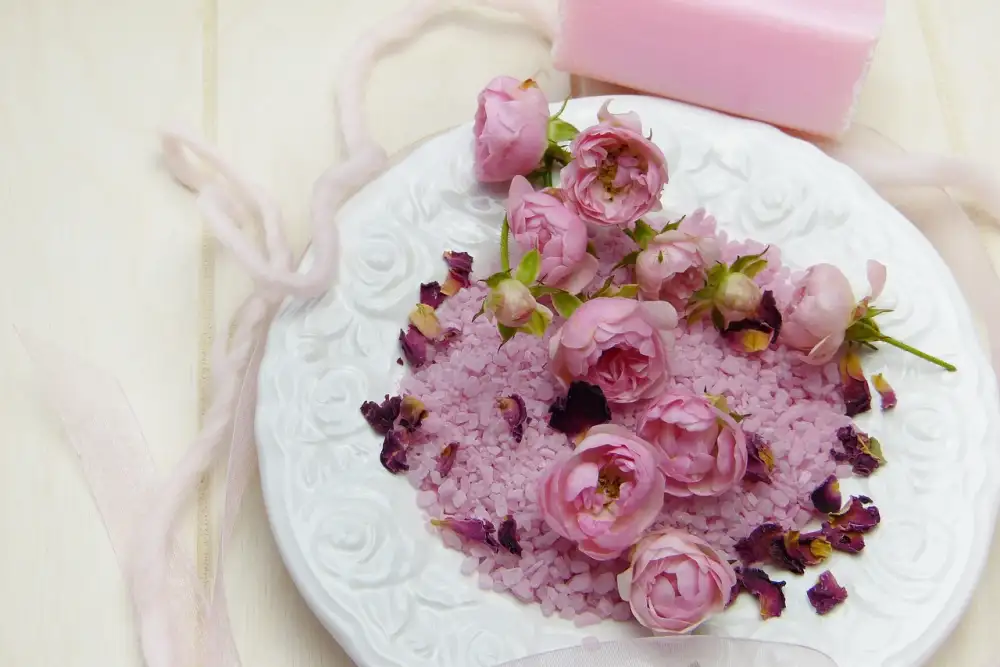Revitalize Your Bathroom Oasis with these Essential Plants for the Bathroom

Bringing the beauty of nature indoors is not limited to living rooms or bedrooms. Your bathroom, often overlooked in terms of decor, can also benefit from the addition of plants. Not only do they add a touch of greenery and freshness to your bathroom oasis, but they also offer numerous benefits for your well-being. In this article, we will explore the advantages of having plants in the bathroom and provide you with a curated list of essential plants that thrive in this unique environment. So, get ready to revitalize your bathroom space with these natural wonders!
Benefits of having plants in the bathroom
Having plants in the bathroom not only adds a touch of natural beauty but also offers several benefits. Firstly, plants release oxygen and absorb carbon dioxide, improving the air quality in your bathroom. This can help reduce humidity levels and prevent the growth of mold and mildew. Secondly, certain plants like aloe vera and peace lilies have air-purifying properties, removing toxins such as formaldehyde and benzene from the air. Lastly, studies have shown that being around plants can reduce stress levels and promote relaxation, creating a calming atmosphere in your bathroom oasis.
Considerations for choosing plants for the bathroom
When choosing plants for your bathroom, there are a few important considerations to keep in mind. First, bathrooms typically have high humidity levels, so it's crucial to select plants that thrive in moist environments. Look for plants that are known for their ability to tolerate humidity and damp conditions.
Another factor to consider is the amount of natural light your bathroom receives. While some plants can tolerate low light conditions, most plants require at least some indirect sunlight to thrive. Take note of how much light your bathroom gets throughout the day and choose plants accordingly.
Additionally, it's essential to consider the size of your bathroom when selecting plants. If you have limited space, opt for smaller varieties or those that can be easily hung or placed on shelves. On the other hand, if you have a spacious bathroom with ample floor space, you can choose larger plants that make a statement.
Lastly, be mindful of any allergies or sensitivities you may have when selecting bathroom plants. Some individuals may be allergic to certain types of pollen or plant fragrances. Consider opting for non-flowering or low-allergen plants if this is a concern.
By taking these considerations into account, you can ensure that the plants you choose for your bathroom will not only thrive but also enhance the overall ambiance and aesthetics of your space.
Top 5 plants for the bathroom
1. Aloe vera: Known for its healing properties, aloe vera thrives in humid environments like bathrooms. It requires minimal care and can help purify the air by removing toxins.
2. Spider plant: This resilient plant is perfect for bathrooms with low light conditions. It helps to remove formaldehyde and carbon monoxide from the air, making it a great choice for improving indoor air quality.
3. Peace lily: With its elegant white flowers, peace lilies add a touch of beauty to any bathroom. They are excellent at removing mold spores and other harmful toxins from the air, making them ideal for damp bathroom environments.
4. Boston fern: This lush green fern loves high humidity and indirect light, making it an ideal choice for bathrooms. It helps to improve air quality by removing pollutants like formaldehyde and xylene.
5. Snake plant: Also known as "mother-in-law's tongue," snake plants are incredibly resilient and can thrive in low light conditions. They are excellent at filtering out toxins such as benzene, trichloroethylene, and formaldehyde from the air.
These top 5 plants not only enhance the aesthetic appeal of your bathroom but also provide numerous health benefits by improving air quality and reducing humidity levels.
1. Aloe vera
1. Aloe vera is a popular choice for bathroom plants due to its numerous benefits and adaptability. This succulent plant thrives in warm and humid environments, making it perfect for the bathroom's moisture-rich atmosphere.
Aloe vera is well-known for its healing properties, as its gel-like substance can soothe sunburns, skin irritations, and promote wound healing. Additionally, this plant acts as a natural air purifier by removing toxins like formaldehyde and benzene from the air.
To care for your aloe vera plant, place it near a window where it can receive indirect sunlight. Water it sparingly, allowing the soil to dry out completely between waterings. With minimal effort, your bathroom oasis will be enhanced with the beauty and benefits of an aloe vera plant.
2. Spider plant
Spider plants (Chlorophytum comosum) are excellent choices for bathroom greenery. They thrive in low-light conditions, making them perfect for bathrooms with limited natural light. These plants are known for their air-purifying abilities, as they can remove toxins like formaldehyde and xylene from the air.
Spider plants have long, arching leaves that can add a touch of elegance to any bathroom decor. They are also easy to care for, requiring minimal maintenance. Spider plants prefer well-draining soil and should be watered when the top inch of soil feels dry to the touch.
One interesting feature of spider plants is their ability to produce "spiderettes" or baby spider plants on long stems that hang down from the main plant. These can be easily propagated by placing them in water or potting soil, allowing you to expand your collection or share them with friends.
In addition to their aesthetic appeal and air-purifying qualities, spider plants are also considered safe for pets. This makes them an ideal choice for households with furry companions who may be prone to nibbling on houseplants.
Overall, spider plants are versatile and resilient additions to any bathroom oasis. Their ability to thrive in low-light conditions and purify the air make them a top choice for those looking to revitalize their bathroom space with some greenery.
3. Peace lily
Peace lilies are excellent choices for bathroom plants due to their ability to thrive in low-light conditions and high humidity levels. They not only add a touch of elegance with their beautiful white flowers, but they also have air-purifying qualities. Peace lilies can remove toxins like formaldehyde, benzene, and trichloroethylene from the air, making your bathroom a healthier space. Additionally, these plants are known for their ability to increase humidity levels by releasing moisture through their leaves. This can be particularly beneficial in dry climates or during winter months when indoor heating can cause dryness in the air. However, it's important to note that peace lilies are toxic to pets if ingested, so it's crucial to keep them out of reach of curious animals. With proper care and occasional watering, peace lilies can thrive and bring a sense of tranquility to your bathroom oasis.
4. Boston fern
4. Boston Fern:
The Boston fern (Nephrolepis exaltata) is a popular choice for bathroom plants due to its ability to thrive in high humidity and low light conditions. It is known for its delicate, feathery fronds that can add a touch of elegance to any bathroom oasis.
This plant not only adds aesthetic appeal but also offers several benefits. It acts as a natural air purifier, removing toxins such as formaldehyde and xylene from the air, which are commonly found in bathroom products. Additionally, the Boston fern helps to increase humidity levels by releasing moisture into the air through its leaves.
To care for your Boston fern, place it in a spot where it can receive indirect sunlight or low light conditions. Keep the soil consistently moist but avoid overwatering, as this can lead to root rot. Mist the leaves regularly or place a tray of water nearby to maintain humidity levels.
Regularly check for signs of pests such as mealybugs or spider mites and take necessary measures if infestation occurs. Prune any yellow or brown fronds to maintain its lush appearance.
With proper care, the Boston fern can thrive in your bathroom oasis, providing you with a refreshing and vibrant atmosphere while purifying the air you breathe.
5. Snake plant
4.5. Snake Plant
The snake plant, also known as Sansevieria or mother-in-law's tongue, is a popular choice for bathroom plants due to its ability to thrive in low light and high humidity environments. This resilient plant has long, upright leaves that are variegated with shades of green and yellow, adding a touch of elegance to any bathroom.
One of the key benefits of having a snake plant in your bathroom is its air-purifying properties. It is known to remove toxins such as formaldehyde, benzene, and trichloroethylene from the air, making it an excellent choice for improving indoor air quality.
Snake plants are also low-maintenance and require minimal care. They can tolerate neglect and do not need frequent watering, making them ideal for busy individuals or those who may forget to water their plants regularly. In fact, overwatering can be detrimental to the health of a snake plant, so it's best to let the soil dry out between waterings.
In addition to its air-purifying qualities and low-maintenance nature, the snake plant is also believed to release oxygen at night, making it an excellent choice for improving sleep quality. This makes it a perfect addition to your bedroom if you have limited space in your bathroom.
To ensure the well-being of your snake plant, place it in indirect sunlight or low light conditions as direct sunlight can scorch its leaves. It thrives in temperatures ranging from 60-85°F (15-29°C) but can tolerate slightly cooler temperatures during winter months.
Overall, the snake plant is an attractive and beneficial addition to any bathroom oasis. Its ability to purify the air, thrive in low light conditions, and require minimal care make it a top choice among bathroom plants. Consider adding this versatile plant to revitalize your bathroom space while enjoying its numerous benefits.
Tips for caring for bathroom plants
1. Lighting: Most bathroom plants thrive in bright, indirect light. Place your plants near a window or choose varieties that can tolerate low light conditions.
2. Watering: Bathrooms tend to have higher humidity levels, so be mindful not to overwater your plants. Check the soil moisture regularly and water only when it feels dry to the touch.
3. Drainage: Ensure your plant pots have drainage holes to prevent water from pooling at the bottom. Excess moisture can lead to root rot and other fungal diseases.
4. Temperature: Most bathroom plants prefer temperatures between 60-75°F (15-24°C). Avoid placing them near drafty windows or heating vents as sudden temperature fluctuations can harm the plants.
5. Fertilizing: Use a balanced, water-soluble fertilizer once a month during the growing season to provide essential nutrients for your bathroom plants.
6. Pruning: Regularly trim dead leaves or stems to promote healthy growth and maintain an attractive appearance for your plants.
7. Cleaning: Dust can accumulate on plant leaves, hindering their ability to absorb sunlight. Wipe down leaves with a damp cloth occasionally to keep them clean and free from dust.
By following these tips, you can ensure that your bathroom plants thrive and continue to enhance the ambiance of your oasis of relaxation.
In conclusion, adding plants to your bathroom can not only enhance the aesthetic appeal but also provide numerous benefits. Plants help purify the air by removing toxins and releasing oxygen, creating a healthier environment. They also add a touch of tranquility and relaxation to your bathroom oasis. When choosing plants for your bathroom, consider factors such as low light conditions and high humidity levels. The top 5 plants recommended for bathrooms are Aloe vera, Spider plant, Peace lily, Boston fern, and Snake plant. Remember to care for your bathroom plants by providing adequate water and occasional fertilization. So go ahead and revitalize your bathroom with these essential plants, bringing nature indoors and transforming your space into a rejuvenating sanctuary.
Published: 10. 03. 2024
Category: Home



